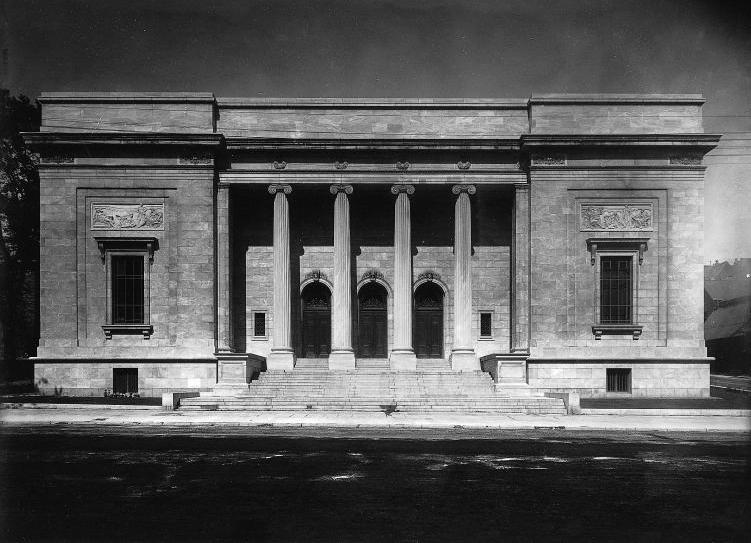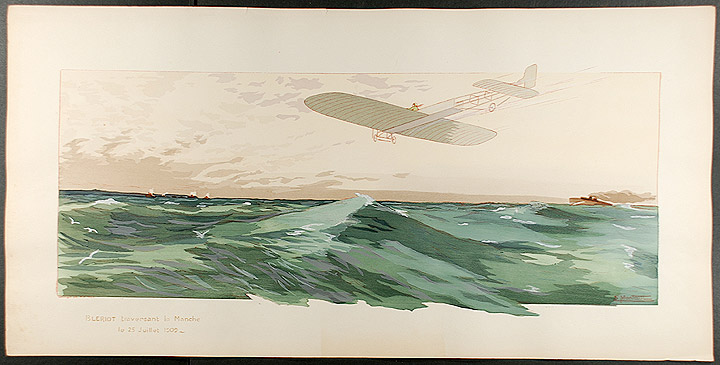|
Leo Ayotte
Leo Ayotte (October 10, 1909 – December 21, 1976), was a Canadian oil painter and artist. Early life Born in Sainte-Flore, Mauricie, Quebec to a family of modest means, he began his studies at the College Séraphique and at Trois-Rivières Seminary, and finally, in Nicolet. He abandoned his studies at the end of his rhetoric and began to compose poems and paint. In 1938, Ayotte moved to Montreal and worked as a model at the École des beaux-arts de Montréal and the Montreal Museum of Fine Arts. Not being registered, Ayotte could not follow the lessons, but his work there as a model and as a janitor allowed him to listen in on classes. Without money, he also picked up the half-empty tubes left by careless students and used them to paint. The director Maillard told him later after he saw one of his paintings: "You are my best student." Visit to Paris Through his art career and lectures, Ayott was able to save enough money to fulfil his dream of visiting France. In July 1962 ... [...More Info...] [...Related Items...] OR: [Wikipedia] [Google] [Baidu] |
Benezit Dictionary Of Artists
The ''Benezit Dictionary of Artists'' (in French, ''Bénézit: Dictionnaire des peintres, sculpteurs, dessinateurs et graveurs'') is an extensive publication of bibliographical information on painters, sculptors, designers and engravers created primarily for art museums, auction houses, historians and dealers. It was published by Éditions Gründ in Paris but has been sold to Oxford University Press. First published in the French language in three volumes between 1911 and 1923, the dictionary was put together by Emmanuel Bénézit (1854–1920) and a team of international specialists with assistance from his son the painter Emmanuel-Charles Bénézit (1887–1975), and daughter Marguerite Bénézit. After the elder Bénézit's death the editors were (1895–1994) and the painter (1922–2004), the younger Bénézit having already left Paris and moved to Provence. The next edition was an eight-volume set published between 1948 and 1955, followed by a ten-volume set in 1976 ... [...More Info...] [...Related Items...] OR: [Wikipedia] [Google] [Baidu] |
Mauricie
Mauricie () is a traditional and current administrative region of Quebec. La Mauricie National Park is contained within the region, making tourism in Mauricie popular. The region has a land area of 35,860.05 km2 (13,845.64 sq mi) and a population of 266,112 residents as of the 2016 Census. Its largest cities are Trois-Rivières and Shawinigan. The word ''Mauricie'' was coined by local priest and historian Albert Tessier and is based on the Saint-Maurice river which runs through the region on a North-South axis. Mauricie administrative region was created on August 20, 1997 from the split of Mauricie–Bois-Francs administrative region into Mauricie and Centre-du-Québec. However, the concept of Mauricie as a traditional region long predates this. Administrative divisions Regional county municipalities * Les Chenaux Regional County Municipality * Maskinongé Regional County Municipality * Mékinac Regional County Municipality Equivalent territories * Agglomeratio ... [...More Info...] [...Related Items...] OR: [Wikipedia] [Google] [Baidu] |
Quebec
Quebec is Canada's List of Canadian provinces and territories by area, largest province by area. Located in Central Canada, the province shares borders with the provinces of Ontario to the west, Newfoundland and Labrador to the northeast, New Brunswick to the southeast and a coastal border with the territory of Nunavut. In the south, it shares a border with the United States. Between 1534 and 1763, what is now Quebec was the List of French possessions and colonies, French colony of ''Canada (New France), Canada'' and was the most developed colony in New France. Following the Seven Years' War, ''Canada'' became a Territorial evolution of the British Empire#List of territories that were once a part of the British Empire, British colony, first as the Province of Quebec (1763–1791), Province of Quebec (1763–1791), then Lower Canada (1791–1841), and lastly part of the Province of Canada (1841–1867) as a result of the Lower Canada Rebellion. It was Canadian Confederation, ... [...More Info...] [...Related Items...] OR: [Wikipedia] [Google] [Baidu] |
Trois-Rivières
Trois-Rivières (, ; ) is a city in the Mauricie administrative region of Quebec, Canada. It is located at the confluence of the Saint-Maurice River, Saint-Maurice and Saint Lawrence River, Saint Lawrence rivers, on the north shore of the Saint Lawrence River across from the city of Bécancour, Quebec, Bécancour. It is part of the densely populated Quebec City–Windsor Corridor and is approximately halfway between Montreal and Quebec City. Trois-Rivières is the economic and cultural hub of the Mauricie region. The settlement was founded by French colonists on July 4, 1634, as the second permanent settlement in New France, after Quebec City in 1608. The name of Trois-Rivières, which dates from the end of the 16th century, was used by French explorers in reference to the three channels in the Saint-Maurice River formed at its mouth with the Saint Lawrence, as it is divided by two islands, Potherie (Île Caron) and Saint-Quentin Island, Île Saint-Quentin. The city occupies a ... [...More Info...] [...Related Items...] OR: [Wikipedia] [Google] [Baidu] |
Nicolet, Quebec
Nicolet () is the county seat of Nicolet-Yamaska Regional County Municipality, Quebec, Canada. The population as of the Canada 2016 Census was 8,169. It is the seat of the Roman Catholic Diocese of Nicolet. The residents of the town pronounce the final "t" in Nicolet, but people outside of the region do not. History The town took its name from Jean Nicolet, a French explorer and clerk of the Company of One Hundred Associates, who explored the Great Lakes region west to Wisconsin. Despite never having lived there, he explored the area during the seven years he lived in Trois-Rivières. The area was originally settled by the Abenaki tribe, who knew it as ''Pithigan'' or ''Pithiganek'', meaning "entrance". French colonial settlement of Nicolet area began in the late 17th century, with Pierre Monet de Moras constructing a seigneurial manor on what is now known as Moras Island. Rights to the territory of Nicolet were accorded in 1672 by Jean Talon, passing through several hand ... [...More Info...] [...Related Items...] OR: [Wikipedia] [Google] [Baidu] |
École Des Beaux-arts De Montréal
École or Ecole may refer to: * an elementary school in the French educational stages normally followed by secondary education establishments (collège and lycée) * École (river), a tributary of the Seine flowing in région Île-de-France * École, Savoie, a French commune * École-Valentin, a French commune in the Doubs département * Grandes écoles, higher education establishments in France * The École The École, formerly Ecole Internationale de New York, is an intimate and independent French-American school, which cultivates an internationally minded community of students from 2 to 14 years old in New York City’s vibrant Flatiron Distric ..., a French-American bilingual school in New York City * Ecole Software, a Japanese video-games developer/publisher {{disambiguation, geo ... [...More Info...] [...Related Items...] OR: [Wikipedia] [Google] [Baidu] |
Montreal Museum Of Fine Arts
The Montreal Museum of Fine Arts (MMFA) is an art museum in Montreal, Quebec, Canada. It is the largest art museum in Canada by gallery space. The museum is located on the historic Golden Square Mile stretch of Sherbrooke Street west. The MMFA is spread across five pavilions, and occupies a total floor area of , 13,000 () of which are exhibition space. With the 2016 inauguration of the Michal and Renata Hornstein Pavilion for Peace, the museum campus was expected to become the eighteenth largest art museum in North America. The permanent collection included approximately 44,000 works in 2013. The original "reading room" of the Art Association of Montreal was the precursor of the museum's current library, the oldest art library in Canada.MMFA Library The Montreal Museum of Fine Arts is a member of the International Group of Organizers of La ... [...More Info...] [...Related Items...] OR: [Wikipedia] [Google] [Baidu] |
Jean Dallaire
Jean-Philippe Dallaire (9 June 1916 – 27 November 1965) was one of the leading artists working figuratively in the 1960s in Canada. He is known for his festive scenes peopled by macabre characters. Early years Jean-Philippe Dallaire was born in Hull to a large working-class family. He started drawing when he was eleven years old. He studied at the École technique in Hull and at the Central Technical School in Toronto between 1932 and 1935. Dallaire then studied briefly in Boston. In 1936 he set up his studio in the Dominican monastery in Ottawa and began his career painting religious subjects. That year, at the age of twenty, he painted a self-portrait that was later acquired from his estate by the National Gallery of Canada in 1972. In Ottawa, Dallaire become involved with Les Confrères artistes Le Caveau, working alongside Henri Masson. In 1938 Dallaire studied at the École des Beaux Arts in Montreal. In October 1938 the government of Quebec gave him a grant that allowed ... [...More Info...] [...Related Items...] OR: [Wikipedia] [Google] [Baidu] |
1909 Births
Events January–February * January 4 – Explorer Aeneas Mackintosh of the Imperial Trans-Antarctic Expedition escapes death by fleeing across drift ice, ice floes. * January 7 – Colombia recognizes the independence of Panama. * January 9 – The British Nimrod Expedition, ''Nimrod'' Expedition to the South Pole, led by Ernest Shackleton, arrives at the Farthest South, farthest south reached by any prior expedition, at 88°23' S, prior to turning back due to diminishing supplies. * January 11 – The International Joint Commission on US-Canada boundary waters is established. * January 16 – Members of the ''Nimrod'' Expedition claim to have found the magnetic South Pole (but the location recorded may be incorrect). * January 24 – The White Star Liner RMS Republic (1903), RMS ''Republic'' sinks the day after a collision with ''SS Florida'' off Nantucket. Almost all of the 1,500 passengers are rescued. * January 28 – The last United States t ... [...More Info...] [...Related Items...] OR: [Wikipedia] [Google] [Baidu] |
1976 Deaths
Events January * January 2 – The International Covenant on Economic, Social and Cultural Rights enters into force. * January 5 – The Pol Pot regime proclaims a new constitution for Democratic Kampuchea. * January 18 – Full diplomatic relations are established between Bangladesh and Pakistan 5 years after the Bangladesh Liberation War. * January 27 ** The United States vetoes a United Nations resolution that calls for an independent Palestinian state. ** The First Battle of Amgala breaks out between Morocco and Algeria in the Spanish Sahara. February * February 4 ** The 1976 Winter Olympics begin in Innsbruck, Austria. ** The 7.5 Guatemala earthquake affects Guatemala and Honduras with a maximum Mercalli intensity of IX (''Violent''), leaving 23,000 dead and 76,000 injured. * February 9 – The Australian Defence Force is formed by unification of the Australian Army, the Royal Australian Navy and the Royal Australian Air Force. * February 13 – General ... [...More Info...] [...Related Items...] OR: [Wikipedia] [Google] [Baidu] |
People From Mauricie
The term "the people" refers to the public or common mass of people of a polity. As such it is a concept of human rights law, international law as well as constitutional law, particularly used for claims of popular sovereignty. In contrast, a people is any plurality of persons considered as a whole. Used in politics and law, the term "a people" refers to the collective or community of an ethnic group or nation. Concepts Legal Chapter One, Article One of the Charter of the United Nations states that "peoples" have the right to self-determination. Though the mere status as peoples and the right to self-determination, as for example in the case of Indigenous peoples (''peoples'', as in all groups of indigenous people, not merely all indigenous persons as in ''indigenous people''), does not automatically provide for independent sovereignty and therefore secession. Indeed, judge Ivor Jennings identified the inherent problems in the right of "peoples" to self-determination, as i ... [...More Info...] [...Related Items...] OR: [Wikipedia] [Google] [Baidu] |




